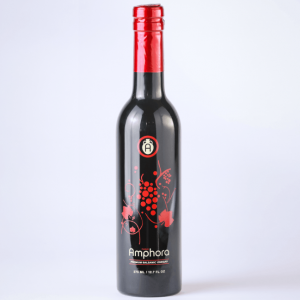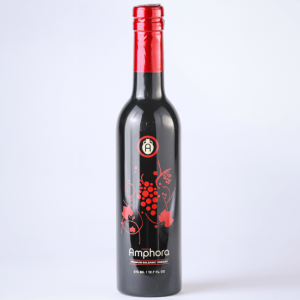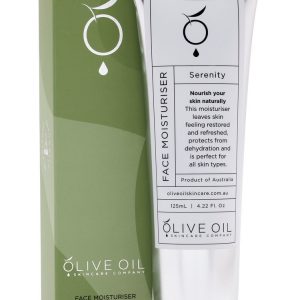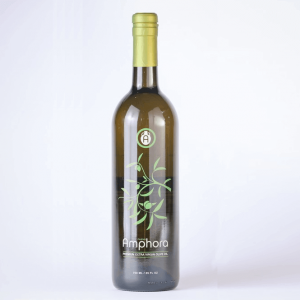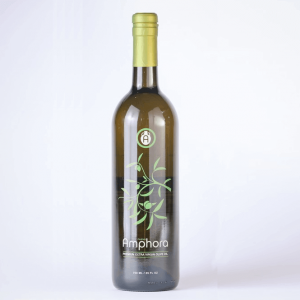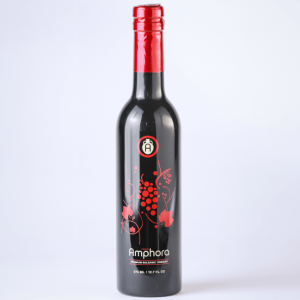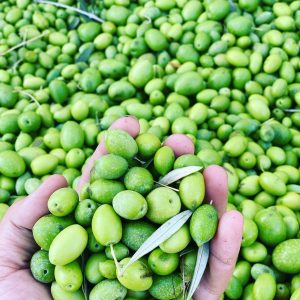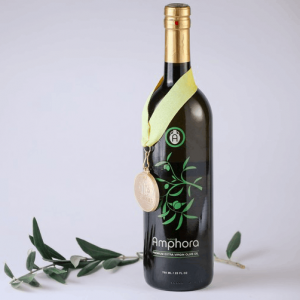Aged Sicilian Lemon White Balsamic Vinegar
Playfully tart and pleasantly sweet, our Sicilian Lemon White Balsamic has a perfect balance of acidity and a crisp, lemon flavor and aroma. Fabulous with seafood, in dressings or in mixed drinks. Pairs well with Roasted Sesame oil for a fantastic salad dressing or marinade!
Lambrusco Red Wine Vinegar
The wonderful Lambrusco red wine vinegar has joined our lineup! This is a culinary delight. Very fruit-forward, tart & delicious – made from the Italian Lambrusco grape grown in Modeno, Italy. This special vinegar is bright, tart, ruby red with an almost bubbly effervescence. It’s a delicious compliment for vinaigrettes, marindates, & dressings.
Face Moisturiser Serenity
Introducing our Serenity Face Moisturiser! Suitable for all skin types and rich in nutrients and vitamins, our moisturiser hydrates and tones the skin. It contains vitamins B3, E and Olive …
The Gourmet Pack
The ideal gift for food lovers and home chefs. A sample pack of 6 – 60ml bottles featuring 3 pairings of our most popular olive oils and balsamic vinegars. Great for salad dressings, cooking and marinades. Add a tablespoon or two of any of our white balsamic vinegars to sparkling water or cocktails for a refreshing drink!
The GOURMET SAMPLE PACK features the following Amphora products:
Portuguese Cobrancosa Extra Virgin Olive Oil paired with Traditional Dark Balsamic, Infused Milanese Gremolata Olive Oil paired with Sicilian Lemon White Balsamic, and Infused Basil Olive Oil paired with Peach White Balsamic.
The Artisan Pack
The ideal gift for food lovers and home chefs. A sample pack of 6 – 60ml bottles featuring 3 pairings of our most popular olive oils and balsamic vinegars. Great for salad dressings, cooking and marinades. Add a tablespoon or two of any of our white balsamic vinegars to sparkling water or cocktails for a refreshing drink!
The ARTISAN SAMPLE PACK features the following Amphora products:
Fused Blood Orange Olive Oil paired with Cranberry-Pear White Balsamic, Infused Persian Lime Olive Oil paired with Honey Ginger White Balsamic, and Infused Tuscan Herb Olive Oil paired with Fig Dark Balsamic.
Spicy Calabrian Pesto Olive Oil
A wonderful spicy blend of red chili pepper flakes and pesto in an infused olive oil. Use it on everything from pizzas to risottos, avocado toast, pasta, potatoes, and as a delectable dipping oil and for marinades. Like our Tuscan Herb olive oil, sprinkle with grated Parmigiano Reggiano cheese and a few twists of freshly ground pepper for an irresistible bread dipper.
Harissa Infused Olive Oil
(NEW) Chimichurri Verde Fused Green Chile Olive Oil
Our delightfully spicy and pungent Chimichurri Verde Olive Oil is made with a base of fused green chili olive oil flavored with a medley of spices & herbs including garlic, cilantro, parsley, oregano, black pepper, and red chili. we suggest using it to sauté or grill vegetables and marinate chicken, shrimp, beef or pork. It works exceptionally well with beans and legumes, including drizzling over hummus. Try using it on popcorn or as a base for a spicy aioli. This is a great spicy oil to experiment with! It pairs well for marinades and vinaigrette with Sicilian Lemon White Balsamic and Oregano White Balsamic. For a fun, sweeter, fruity twist on a pairing try it with the Peach White Balsamic.
Baklouti Fused Green Chile Olive Oil
From the Barbary Coast of North Africa, this Tunisian Baklouti pepper is rare and unique to this region. This fused oil is the only example of this fruity and spicy green chile olive oil in the world. Baklouti chile olive oil is made by combining fresh, early harvest organic olives with an almost equal ration of fresh, whole green Baklouti chiles. The two, and only two, ingredients are then crushed together, mixed in the malaxer which fuses the fresh green essential oil of the pepper with the organic olive oil. Baklouti adds a savory, tantalizing kick to salsas, marinades, soups, grilled foods, vegetables, meats, marinades, beans – and any dish where that would be elevated by an intense, complex, heat & spice. An Amphora favorite! Caution: very hot!
Watermelon Rosé White Balsamic Vinegar
Welcome our newest summer Rosé white balsamic addition, Watermelon! A refreshing twist on tradition – this mouthwatering balsamic combines the juicy sweetness of ripe summer watermelon with our beautifully balanced Italian Rosé Balsamic. Light, fragrant, and bursting with flavor, it adds a playful, floral complexity to any dish! It pairs wonderfully with Persian Lime Olive Oil, Basil Olive Oil, and our new Chimichurri Verde Fused Olive Oil for a zesty, spicy, herbaceous compliment. This is a perfect balsamic for spritzers & cocktails as well!
Strawberry Kiwi Rosé White Balsamic Vinegar
Our Strawberry Kiwi Rosé Balsamic vinegar starts with a selection of the best quality grape must and wine vinegar. Trebbiano, Albana, and Montuni grapes are typically chosen based on complexity. Its high density creates a rich condiment suitable for use as a replacement for syrups, as a glaze, or as an ingredient in shrubs, cocktails, dressings, and marinades. It makes a lovely, refreshing shaved ice when frozen, an excellent light adornment for fresh cut fruit or green salads, or a playful accompaniment for yogurt and berries. Perfect for Spritzers! This is a very delicious addition to our balsamics that customers are loving!
Chipotle Infused Olive Oil
Welcome this smokey, delectable complex heat to roasted meats, marinades, grilled foods, beans, and any Mexican-inspired dish.
(NEW) Chilean Arbequina (Robust Intensity – High Polyphenol – Spring Harvest 2025)
| Harvest: May 2025 ? Harvest Date: The fresher the better! Olive oils are healthier and more flavorful when they’re consumed fresh! | Poly: 502.9? Polyphenols – Antioxidant substances found in EVOO. The higher the better! Polyphenols extend the shelf-life of an oil & also determine the “style” in terms of bitterness and pungency. Our high phenol oils are being recommended by health professionals all over the world. |
| Perox: 3.8? Peroxide: Peroxide Value – (PV) The lower the better! Must be equal or less than 20. The primary measurement of the rancidity of a particular extra virgin olive oil. PV is affected by procedures used in processing and storing of the oil. Our average PV at time of crush is around 4! |
Oleic: 74.1? Oleic Acid: Legal limit is 55%. The higher the better. Our average is around 77%! Our bodies absorb peroxidized fats we consume and incorporate them into your cells, oleic acid’s superior resistance to free radical attacks also protects your cell membranes, proteins, and DNA from being damaged, even as it protects the oil from spoiling. |
| Dags: 90.2? DAGS :DAGs are important shelf-life indicators and can be used to determine the shelf life (or lack thereof) of an oil at any time in its life. Fresh Olive Oil made from sound fruit should result in a DAG content of 85% or higher whereas the processing of rotten and or fermented olives will produce fresh oil with low DAGs indicating a very short shelf-life. | FFA: .18? FFA: Free Fatty Acid – The lower, the better. The IOC requires that this number be below 0.8 in order to be considered Extra Virgin grade. Our average is about 0.18! The lower the FFA, the higher the smoke point of the oil. |
(NEW) Peruvian Barnea (Robust Intensity – Spring Harvest 2025)
| Harvest: March 2025 ? Harvest Date: The fresher the better! Olive oils are healthier and more flavorful when they’re consumed fresh! | Poly: 436.6? Polyphenols – Antioxidant substances found in EVOO. The higher the better! Polyphenols extend the shelf-life of an oil & also determine the “style” in terms of bitterness and pungency. Our high phenol oils are being recommended by health professionals all over the world. |
| Perox: 4.4? Peroxide: Peroxide Value – (PV) The lower the better! Must be equal or less than 20. The primary measurement of the rancidity of a particular extra virgin olive oil. PV is affected by procedures used in processing and storing of the oil. Our average PV at time of crush is around 4! |
Oleic: 65.3? Oleic Acid: Legal limit is 55%. The higher the better. Our average is around 77%! Our bodies absorb peroxidized fats we consume and incorporate them into your cells, oleic acid’s superior resistance to free radical attacks also protects your cell membranes, proteins, and DNA from being damaged, even as it protects the oil from spoiling. |
| Dags: 97.4? DAGS :DAGs are important shelf-life indicators and can be used to determine the shelf life (or lack thereof) of an oil at any time in its life. Fresh Olive Oil made from sound fruit should result in a DAG content of 85% or higher whereas the processing of rotten and or fermented olives will produce fresh oil with low DAGs indicating a very short shelf-life. | FFA: .16? FFA: Free Fatty Acid – The lower, the better. The IOC requires that this number be below 0.8 in order to be considered Extra Virgin grade. Our average is about 0.18! The lower the FFA, the higher the smoke point of the oil. |



